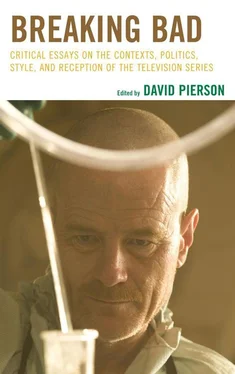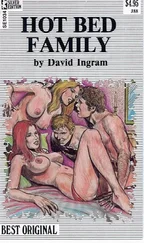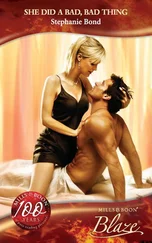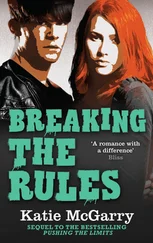Beck, Eric. “Respecting the Middle: The Wire ’s Omar Little as Neoliberal Subjectivity.” Rhizomes . 19. Summer 2009. 19 September 2011. http://www.rhizomes.net/issue19/beck.html.
Byers, Michele and Val Marie Johnson, eds. The CSI Effect: Television, Crime, and Governance. Lanham, MD: Lexington Books, 2009.
Dean, Jodi. “Enjoying Neoliberalism.” Cultural Politics . 4:1. (2008): 47-72.
Fiske, John. “Popularity and Ideology, A Structuralist Reading of Dr. Who ,” in Interpreting Television: Current Research Perspectives, edited by Willard D. Rowland, Jr. and Bruce Watkins. 165-198. Beverly Hills: Sage, 1984.
Giroux, Henry. “Dumbing Down Teachers: Rethinking the Crisis of Public Education and the Demise of the Social State.” The Review of Education, Pedagogy, and Cultural Studies. 32. (2010): 339-381.
Gordon, Todd. “Neoliberalism, Racism, and the War on Drugs in Canada.” Social Justice . 33:1. (March 2006): 59-79.
Herbert, Steve and Elizabeth Brown. “Conceptions of Space and Crime in the Punitive Neoliberal City.” Antipode . 38:4. (September 2006): 755-777.
Hursh, David. “Neo-liberalism, Markets and Accountability: Transforming Education and Undermining Democracy in the United States and England.” Policy Futures in Education . 3:1. (2005): 3-15.
Ismaili, Karim. “Explaining the Cultural and Symbolic Resonance of Zero Tolerance in Contemporary Criminal Justice.” Contemporary Justice Review. 6(3). (2003): 255-264.
Lemke, Thomas. “‘The birth of bio-politics’: Michel Foucault’s Lecture at the College de France on Neo-Liberal Governmentality.” Economy and Society . 30:2. (May 2001): 190-207.
McChesney, Robert W. “Introduction.” In Profit Over People: Neoliberalism and Global Order , edited by Noam Chomsky and Robert McChesney. New York: Seven Stories Press, 1999.
Miller, Toby. Cultural Citizenship: Cosmopolitanism, Consumerism, and Television in a Neoliberal Age. Philadelphia: Temple University Press, 2006.
Ouellette, Laurie. “‘Take Responsibility for Yourself’: Judge Judy and the Neoliberal Citizen.” In Reality TV: Remaking Television Culture , edited by Susan Murray and Laurie Ouellette. 231-250. New York: New York University Press, 2004. 231-250.
Ouellette, Laurie and James Hay. Better Living through Reality TV: Television and Post-Welfare Citizenship . Oxford, UK: Wiley-Blackwell, 2008.
Payan, Tony. “The Drug War and the U.S.-Mexico Border: The State of Affairs.” South Atlantic Quarterly . 105:4. (Fall 2006): 863-880.
Peck, Janice. The Age of Oprah, Cultural Icon for the Neoliberal Era . Boulder, CO: Paradigm, 2008.
Pine, Jason. “Economy of Speed: The New Narco-Capitalism.” Public Culture . 19:2. (2007): 357-366.
Saez, Pedro A., Adonaid Casado, and Jay C. Wade. “Factors Influencing Masculinity Ideology among Latino Men.” The Journal of Men’s Studies. 17(2). (Spring 2009): 116-128.
Schneider, Cathy L. “Racism, Drug Policy, and AIDS.” Political Science Quarterly . 113:3. (1998): 427-446.
Sontag, Susan. Illness as Metaphor and AIDS and its Metaphors. New York: Picador, 2001.
Wacquant, Loic. Punishing the Poor: The Neoliberal Government of Social Insecurity . Durham, NC: Duke University Press, 2009.
Chapter 2
THE ECONOMY OF TIME AND MULTIPLE EXISTENCES IN BREAKING BAD
Dustin Freeley
We meet Walter White in media res: underwear-clad, gasmask-wearing, maniacally driving an RV; his pants fall in slow motion to the desert road. Two bodies in the back of the RV shift along the floor with each hard corner, and the vehicle skids off the road, coming to a stop in a ditch. After Walt springs from the vehicle, he dons a lime green dress shirt that was hanging from the rearview mirror and picks up a camera to record what he believes will potentially be his last words to his family before he is apprehended by the scrannel of sirens in the distance. Here, his disheveled mismatched body illustrates a broken down and reconstructed amalgam of Walter White: the nakedness of rebirth, the formal dress shirt of his professional life, the gun-in-the waistband that bespeaks danger, death, and renegade. This first scene in the Breaking Bad “Pilot” (1/20/08) sets the viewer up for the final scene wherein Walter stares amazed at the flurry of fire trucks that whiz by him on the same desert road without batting an eye at his smoking RV, or his half-nakedness. At this point, he is a changed man, something driven home by his wife Skyler’s quizzical response as he climbs in to bed, kisses her lustfully on the mouth and penetrates her from behind as Mick Harvey’s “Out of Time Man” plays in the background, providing us with an outline for Walter, a man of whom “time made a fool” and who is at a point in his life where there’s “no use in waiting no more.” [1] Lyrics taken from Justsomelyrics.com from Mick Harvey’s song, “Out of Time Man.”
And, it is here that Vince Gilligan begins a narrative that explores our anxieties over time and the multiple existences that thrive within the converging past, present, and future of Walter White in Breaking Bad .
It would be an understatement to suggest that a minor anxiety over time permeates our culture. This is most apparent in that “Time squeeze is a phrase often used to describe contemporary concerns about a shortage of time and an acceleration of the pace of everyday life” (Moshe 2012, 69). However, this anxiety over time is not exclusive to our century. In Gulliver’s Travels (1892), Lilliputians investigate Lemuel’s pocket watch, describing it as “the god that he worships” because “he seldom did anything without consulting it” (Swift, loc. 338). Sardonically, Swift offers us a world where each action is obscured by the time in which it happens, leaving each act as merely a marker, but the duration of it as the importance. It seems rather improbable that Louis-Francois Cartier, who made a watch with a wristband for an aviator who needed better use of his hands than to handle a fob, saw his innovation as a symbolic manacle that quite literally fastened us to the awareness of time (Gleick 2000). Our own culture of amalgamated computers and cellphones “encourage[s] a new notion of time because they promise that one can layer more activities onto it. Because you can text while doing something else, texting does not seem to take time, but to give you time” (Turkle 2011, 164). Adding to this effused dialectic is the serialized television series 24 , a unique program in its inception in as much as the show is shot in real time, creates tension through plotted points of action in the narrative and heightens it by running these points simultaneously with a digital clock whose ticks and tocks resemble a bomb’s imminent detonation. The show itself blatantly plays on our anxieties. In a sense, this clock becomes as nefarious as the villain that Jack Bauer hunts. Each hour compartmentalizes various plot points, successes, and failures that all count down to an inevitable degeneration of the season and the events within the narrative.
The largest concern over “clock time” is its tendency to obfuscate “temporality as emergence and substitut[e] it with a temporality of orderings” (Leong, et al. 2009, 1278). In other words, past actions, present cognizance, and future possibilities are replaced with an attention to duration, making the blocks of time more important than the events that occupy them. A problem arises when this constructed time meets the unpredictable and unforeseen, thus coercing the subject to look closer at the moments that led to the present. Here, the focus shifts from the ordinance of “clock time” to a more philosophical discussion of time that frames it as a simultaneous existence of the past, present, and future. In Matter and Memory (1929), Henri Bergson asserts, “our perceptions are undoubtedly interlaced with memories, and inversely, a memory […] only becomes actual by borrowing the body of some perception into which it slips. These two acts, perception and recollection, always interpenetrate each other” (loc. 1052). Bergson’s interpretation of memory requires the subject to reflect on the past as the impetus for the present and the future. Such a theory is further expounded on by Gilles Deleuze (1994), who believes, “Memory is the fundamental synthesis of time, which constitutes the being of the past (that which causes the present to pass)” and “The past in general is the lament in which each former present is focused upon in particular and as a particular” (80). For both Bergson and Deleuze, this shift of ordinate time to reflections on temporality also offers an additional way in which a subject views his or her own time. This philosophical approach to temporality compels the subject to attempt to relive and revise the past in order to alter the present to similarly stretch future time (the time remaining). This convergence of constructed time and philosophical temporality is exemplified by Breaking Bad ’s Walter White, a fifty-year-old high school chemistry teacher forced to acknowledge his own mortality. Within the narrative that ensues, Walter attempts to recoup wasted time, build a surplus of future time, efficiently utilize present time, and create alternate realities to foster simultaneous time lines. In a sense, each one of these endeavors allows Walt to defy that which we have constructed as “clock time” and manipulate his past, present, and future.
Читать дальше












